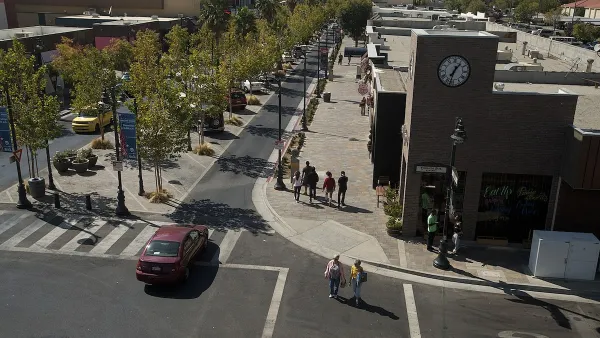Not long ago, Deanna Van Buren was offered the position of lead architect on an unusual project—a video game called "The Witness."
In The Witness, released this year by game designer Jonathan Blow, players embark on independent exploration to discover the world of the game in fragments. Solving puzzles unlocks new spaces, each built with a unique aesthetic: desert ruins, an industrial sector, and a small village, to name a few.
The game's intriguing and widely praised design can be attributed to the unusual collaboration behind it: a team of visual artists, architects, and landscape architects.
Lead architect Deanna Van Buren spoke to Archinect about creating a conceptual "built" environment.
Building the portfolio of niche spaces required a "massive file of design references," she said, including film, tree houses, Hobbit houses, and medieval joinery.
But more challenging than the diversity of structures was learning to speak the language of video games, which has a whole different set of "building codes" than the physical world:
The biggest challenge was that we didn't understand game play and what game play means, and the psychology of game play and how important it was … We had to really step back a lot and think about: does this architecture, do these spaces support the gameplay objectives of this particular puzzle or this particular environment?
FULL STORY: Behind the scenes of 'The Witness', a video game designed by architects

Maui's Vacation Rental Debate Turns Ugly
Verbal attacks, misinformation campaigns and fistfights plague a high-stakes debate to convert thousands of vacation rentals into long-term housing.

Planetizen Federal Action Tracker
A weekly monitor of how Trump’s orders and actions are impacting planners and planning in America.

In Urban Planning, AI Prompting Could be the New Design Thinking
Creativity has long been key to great urban design. What if we see AI as our new creative partner?

King County Supportive Housing Program Offers Hope for Unhoused Residents
The county is taking a ‘Housing First’ approach that prioritizes getting people into housing, then offering wraparound supportive services.

Researchers Use AI to Get Clearer Picture of US Housing
Analysts are using artificial intelligence to supercharge their research by allowing them to comb through data faster. Though these AI tools can be error prone, they save time and housing researchers are optimistic about the future.

Making Shared Micromobility More Inclusive
Cities and shared mobility system operators can do more to include people with disabilities in planning and operations, per a new report.
Urban Design for Planners 1: Software Tools
This six-course series explores essential urban design concepts using open source software and equips planners with the tools they need to participate fully in the urban design process.
Planning for Universal Design
Learn the tools for implementing Universal Design in planning regulations.
planning NEXT
Appalachian Highlands Housing Partners
Mpact (founded as Rail~Volution)
City of Camden Redevelopment Agency
City of Astoria
City of Portland
City of Laramie





























